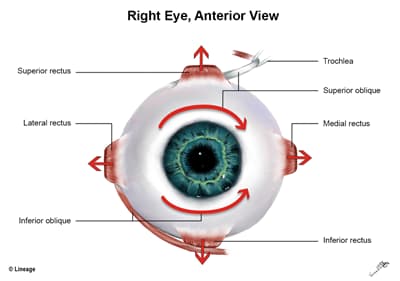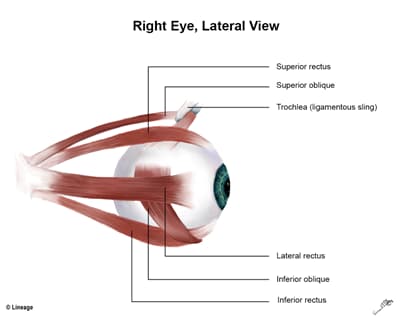Introduction


- The forebrain controls eye movement via
- frontal eye fields (FEF) which
- are involved in generating
- contralateral saccades via
- the contralateral paramedian pontine reticular formation (PPRF)
- contralateral saccades via
- clinical correlate
- right-way eyes
- lesions at the cerebral hemispheres (e.g., stroke) that affects the FEF results in the eyes looking
- toward the side of the lesion
- lesions at the cerebral hemispheres (e.g., stroke) that affects the FEF results in the eyes looking
- wrong-way eyes
- a seizure at the FEF will result in the eyes looking
- away from the side of seizure activity
- thalamic hemorrhages
- for unknown reasons
- a seizure at the FEF will result in the eyes looking
- right-way eyes
- are involved in generating
- frontal eye fields (FEF) which
- Cranial nerves involved in eye movements
- oculomotor nerve (CN III)
- innervates all of the extraocular muscles except
- superior oblique muscle
- lateral rectus muscle
- medial rectus → adducts eye
- superior rectus → elevates and intorts
- inferior rectus → depresses and extorts
- inferior oblique → elevates and extorts
- innervates all of the extraocular muscles except
- trochlear nerve (CN IV)
- superior oblique muscle → depresses and intorts
- oculomotor nerve (CN III)
- Clinical correlate
- medial longitudinal fasciculus (MLF)
- function
- these are heavily myelinated fibers that interconnects the
- oculomotor nuclei
- trochlear nuclei
- abducens nuclei
- vestibular nuclei
- these are heavily myelinated fibers that interconnects the
- function
- medial longitudinal fasciculus (MLF)



